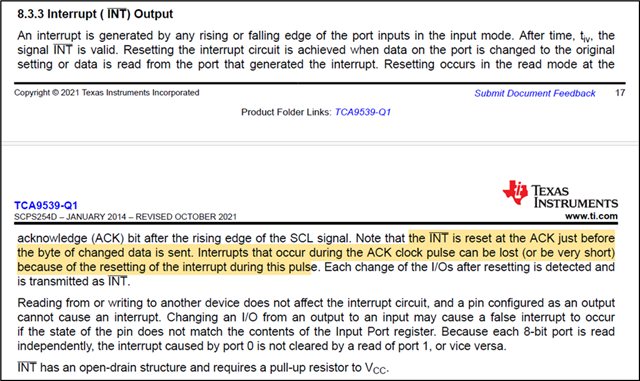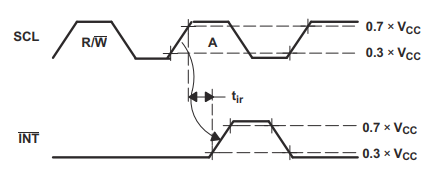Other Parts Discussed in Thread: TCA8418E
Tool/software:
Hi Expert,
Have a nice day!
I have question about TCA9539-Q1 need your professional support:

About “Interrupts that occur during the ACK clock pulse can be lost (or be very short) because of the resetting of the interrupt during this pulse.” I have 2 questions:
- Do you have a more intuitive diagram to illustrate this?
- What I understand is that the lost interrupt is caused by rising or falling edge of the port input occurs at the ACK bit, then it causes the time of /INT=0 is short. Is it right? If my understand is right, any methods to avoid this interrupt lost?
Thanks!
Best Regards,
Leo Ma


